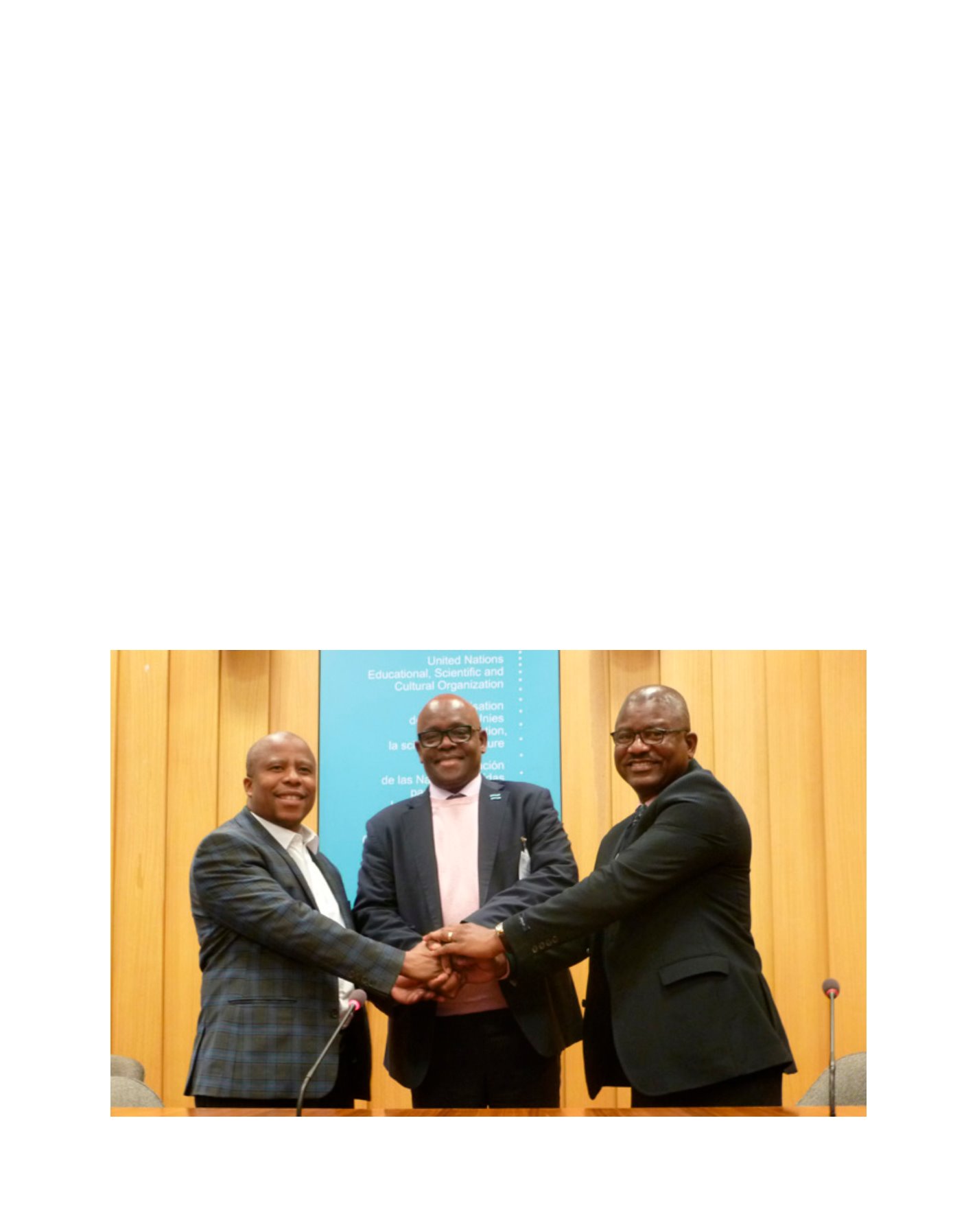

[
] 14
A B
et ter
W
or ld
Groundwater: integrating the missing part of IWRM
in the picture
The UNESCO International Hydrological Programme (IHP)
was instrumental in making the IWRM picture complete
by bringing to policy makers’ attention the need to take
due consideration of the importance of groundwater in the
Orange-Senqu River Basin. As a result, ORASECOM was the
first river basin in Southern Africa to establish a groundwater
technical committee in 2007 to facilitate the dialogue between
the countries on transboundary aquifer management. IHP also
led the International Shared Aquifer Resources Management
(ISARM) programme with the support of the Southern Africa
Development Community (SADC) which mapped more than
20 transboundary aquifers in the region. Among these aqui-
fers, the Stampriet Transboundary Aquifer System (STAS) was
identified as one of the hotspots in the region.
Institutionalizing cooperation over transboundary
aquifers in Southern Africa
The STAS is a large transboundary aquifer shared by
Botswana, Namibia and South Africa that lies entirely within
the Orange-Senqu River Basin. Its importance draws from
the fact that it is the only permanent and dependable water
resource in the area for drinking water and agriculture. From
2013 to 2015, the Governments of Botswana, Namibia and
South Africa, jointly with IHP, undertook an in-depth assess-
ment of the STAS which enabled the establishment of a shared
science-based understanding of the resource. The technical
results obtained were further consolidated with the support
of IHP through capacity building activities on water diplo-
macy and groundwater governance to support the process
of institutionalizing cooperation among the STAS countries.
On May 2017, the ORASECOM groundwater technical
committee presented a proposal for the establishment of
a joint governance mechanism for the STAS, nested in the
ORASECOM structure. On August 2017, the Commissioners
at Director General level that attended the ORASECOM
Council meeting, supported the proposal made by the
groundwater technical committee and decided to operation-
alize the mechanism – the first of its kind in Southern Africa.
The process that led to the establishment of the STAS joint
governance mechanism is a breakthrough in many aspects.
Firstly, it is the first agreement on transboundary aquifers since
the SDGs were adopted in 2016. Prior to the decision to establish
the mechanism, only six formal and two informal agreements
had been documented worldwide. Secondly, it is the first opera-
tional governance mechanism to be nested in a river basin
organization, thus fully capturing the IWRM approach and
directly contributing to the implementation of Target 6.5 both at
national and transboundary level. Thirdly, the mechanism will
enable sustainable actions on the ground, as activities related to
the STAS are part of ORASECOM’s 10-year IWRM Plan (2015–
2024). As such, the implementation and reporting of activities
related to the STAS falls under ORASECOM’s mandate and will
be fully integrated therein with no additional costs to the STAS
countries. Last but not least, what is striking in this process that
led to institutionalizing cooperation over the STAS was its expe-
ditiousness. This was possible mainly because of the existence
of an on-going operational inter-state institutional arrange-
ment such as ORASECOM. The institutional architecture of
Image: UNESCO
High-Level Representatives from Botswana, Namibia and South Africa greeting cooperation over the STAS (Paris, November 2016)
















